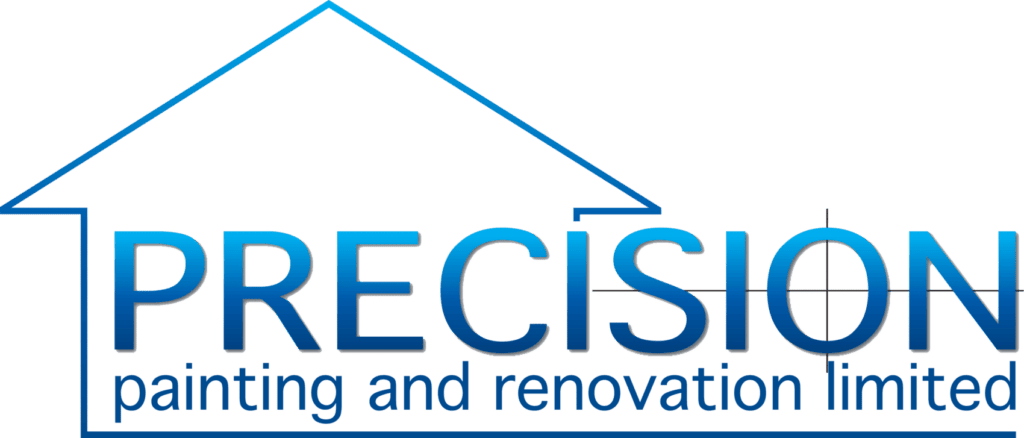Every flawless paint finish begins long before a brush or roller touches the wall. While many focus on color choice and finish type, what truly defines a successful paint job lies beneath the surface. Proper preparation is the unsung hero of durability, adhesion, and overall aesthetics. Whether you’re managing a large-scale commercial project or refreshing a residential space with a Professional House Painting Service, the foundation of success lies in how thoroughly surfaces are prepared before the first coat is applied.
The Foundation of a Lasting Finish
A well-prepared surface ensures that paint adheres correctly and retains its appearance for years. Skipping preparation may save a few hours initially, but it inevitably leads to problems such as peeling, cracking, blistering, and uneven finishes. Paint, after all, cannot mask imperfections—it amplifies them.
Surface preparation bridges the gap between the substrate and the coating. It removes contaminants, evens textures, repairs defects, and creates a receptive base for primer and paint. The goal is to create a clean, stable, and dry surface that allows the coating to bond seamlessly, ensuring longevity and performance.
Why Surface Preparation Matters?
Painting is not merely a cosmetic upgrade—it’s a protective layer. Without proper groundwork, that protection weakens. The reasons for prioritizing preparation are both aesthetic and structural.
-
Adhesion Enhancement: Clean, smooth surfaces allow the paint to grip effectively. Dust, grease, and old flaking paint act as barriers that prevent adhesion. When the surface is prepared correctly, paint forms a tight bond, resisting peeling and blistering.
-
Durability and Longevity: Preparation extends the lifespan of the paint job. A properly prepared wall can retain its color and finish for years, minimizing maintenance cycles.
-
Surface Integrity: Imperfections such as cracks, holes, and uneven textures disrupt the coating’s uniformity. Preparation repairs these flaws, resulting in a professional-grade outcome that maintains both beauty and function.
-
Cost-Efficiency Over Time: While skipping preparation may appear cost-saving initially, the eventual need for repainting or repairs outweighs the short-term benefits. Proper preparation reduces repaint frequency, thus saving both labor and material expenses.
-
Professional Appearance: A clean and even surface reflects craftsmanship. Professionals know that clients notice not just color but texture, sheen uniformity, and precision. Preparation ensures every visual detail aligns perfectly.
Key Steps in Proper Surface Preparation
Surface preparation is both a science and an art. It demands patience, attention to detail, and the right techniques. Each step contributes to a surface that not only looks ready but is structurally primed for painting.
1. Cleaning the Surface
Every surface accumulates contaminants—dust, oils, grease, mildew, and pollutants—that interfere with paint adhesion. Cleaning removes these layers.
-
For Interior Walls: Mild detergents or trisodium phosphate (TSP) solutions effectively eliminate grease and residue.
-
For Exteriors: Pressure washing helps remove dirt, chalking, and loose paint. Surfaces must then be allowed to dry thoroughly to avoid trapping moisture beneath new paint layers.
A clean surface ensures primers and paints bond directly to the substrate, not to contaminants.
2. Removing Old Paint
Peeling, flaking, or blistered paint must be removed to create a stable base. Techniques vary depending on the material and condition:
-
Scraping and Sanding: Ideal for smaller areas or minor deterioration.
-
Heat Guns or Chemical Strippers: Useful for stubborn layers on wood or metal surfaces.
-
Power Washing: Effective for exteriors, but must be followed by thorough drying.
Removing old coatings prevents uneven finishes and ensures fresh paint doesn’t inherit the failures of the old layer.
3. Repairing Surface Defects
No amount of paint can conceal structural flaws. Cracks, dents, and holes require attention before priming.
-
For Drywall: Use joint compound or patching material for smooth repairs.
-
For Plaster Walls: Fill cracks with plaster or patching compound and sand once dry.
-
For Exterior Walls: Seal gaps and cracks with appropriate caulking to prevent water infiltration.
Ignoring these issues can lead to visible flaws and compromised adhesion, especially in high-moisture environments.
4. Sanding and Smoothing
Sanding is the key to achieving a uniform surface texture. It levels patchwork, removes gloss from old finishes, and provides the slight roughness paint requires to grip effectively.
Professionals typically use:
-
Coarse-grit sandpaper (60–80) for heavy imperfections.
-
Medium-grit (120–150) for smoothing repaired areas.
-
Fine-grit (180–220) before final priming or painting.
Dust removal after sanding is crucial; any leftover particles can ruin a smooth finish. A tack cloth or vacuum ensures a spotless surface.
5. Priming the Surface
Primer is not just an optional layer—it’s a bridge between the surface and the topcoat. It seals porous materials, blocks stains, and promotes even paint absorption.
Different primers serve specific purposes:
-
Latex Primer: Ideal for drywall and softwoods.
-
Oil-Based Primer: Best for wood with tannins or previously painted surfaces.
-
Stain-Blocking Primer: Prevents discoloration from water or smoke damage.
-
Metal Primer: Protects against corrosion and rust.
Skipping primer often leads to inconsistent sheen, poor adhesion, and color mismatch.
6. Dealing with Specific Surface Types
Different materials demand distinct preparation methods:
| Surface Type | Preparation Technique | Key Considerations |
|---|---|---|
| Drywall | Clean, repair, sand, and prime | Avoid over-sanding to prevent damage. |
| Wood | Sand, remove dust, and apply wood primer | Address knots and sap streaks. |
| Metal | Degrease, remove rust, and prime with metal primer | Avoid painting over oxidation. |
| Concrete or Masonry | Clean, patch cracks, and allow full cure before painting | Moisture testing may be needed. |
Tailoring preparation to each material ensures coatings adhere correctly and endure environmental stress.
The Science Behind Surface Preparation
Paints are formulated to interact with substrates through mechanical and chemical bonding. For that bond to occur, the surface must be clean, dry, and receptive. When surfaces are poorly prepared, the molecular adhesion is disrupted, causing paint to lift or blister over time.
Moisture content plays a pivotal role. Painting on damp surfaces can trap water beneath the film, leading to bubbling or mildew growth. Similarly, glossy or sealed surfaces need to be abraded or chemically etched to allow new coatings to bite into the material.
In professional practice, surface pH, porosity, and texture are evaluated before application. Excessively smooth surfaces may require scuff sanding or special primers to enhance adhesion.
Common Mistakes That Undermine Preparation
Even seasoned professionals can fall into habits that compromise results. Avoiding these pitfalls ensures optimal finish quality:
-
Skipping Surface Cleaning: Even invisible residues can weaken adhesion.
-
Ignoring Drying Time: Applying paint over damp surfaces traps moisture.
-
Using Incompatible Primers: Mismatched primers and paint systems can cause peeling.
-
Neglecting Surface Repairs: Small cracks can expand beneath paint layers.
-
Poor Dust Management: Sanding residue leads to bumps and fisheyes.
Preparation is meticulous work—but every minute invested upfront prevents countless hours of rework later.
The Role of Environmental Conditions
Temperature, humidity, and ventilation significantly influence both preparation and painting outcomes.
-
Temperature Range: Most coatings adhere best between 10°C and 30°C. Extreme cold slows curing, while excessive heat causes premature drying.
-
Humidity Levels: High humidity prevents evaporation, resulting in longer drying times and weaker bonds.
-
Ventilation: Adequate airflow ensures that cleaning agents, primers, and paints cure evenly without trapping fumes or moisture.
Ignoring environmental factors is a common reason even well-prepared surfaces fail prematurely. Professionals often monitor ambient conditions before, during, and after application to maintain coating integrity.
The Professional Advantage
Those skilled in painting recognize that success lies in preparation as much as application. Experienced painters devote a substantial portion of project time to inspection and readiness. They analyze the substrate, determine the right sequence of cleaning and repairs, and select primers compatible with the surface and paint type.
A well-prepared surface also influences the uniformity of color. Paint applied over inconsistent substrates can appear blotchy or uneven, especially with lighter shades or sheen finishes like satin and gloss. Consistency in texture, moisture, and porosity ensures color uniformity and brilliance.
Benefits That Extend Beyond Aesthetics
Proper surface preparation doesn’t just affect how paint looks—it affects how spaces perform.
Long-Term Benefits Include:
-
Reduced Maintenance: Paint adheres firmly, resisting wear and tear.
-
Moisture Protection: Proper sealing prevents mold, mildew, and rot.
-
Enhanced Value: Professionally prepared and painted properties appear well-maintained and cared for.
-
Sustainable Practices: Reducing repaint frequency conserves resources and minimizes waste.
-
Improved Indoor Air Quality: Cleaning and repair reduce dust, mold, and other pollutants before sealing surfaces.
When viewed holistically, preparation is both an aesthetic and environmental investment.
Practical Example: The Contrast Between Prepared and Unprepared Surfaces
Consider two identical exterior walls—one properly prepared and the other hastily painted.
-
Wall A (Prepared): The surface was pressure-washed, dried, patched, sanded, and primed. The paint finish appears uniform, with no peeling even after several seasons.
-
Wall B (Unprepared): Old paint was left intact, dust and algae remained, and no primer was used. Within months, blistering and discoloration appear, leading to costly rework.
This example highlights that visible beauty stems from invisible effort. The unseen stages of cleaning, sanding, and priming dictate the durability and visual impact of the final finish.
When Preparation Demands Special Attention
Some conditions require additional care before painting can proceed:
-
Water Damage: Surfaces must be completely dry and stains sealed with a stain-blocking primer.
-
Smoke or Grease Contamination: Clean with specialized solutions to prevent bleed-through.
-
Chalky Surfaces: Apply a bonding primer after cleaning to reinforce adhesion.
-
Mold or Mildew: Treat with a fungicidal wash and ensure full eradication before painting.
Ignoring these issues means defects will resurface—literally—through the new coating.
Conclusion
Surface preparation may not carry the immediate satisfaction of applying fresh paint, but it defines the project’s success. It demands patience, attention, and a commitment to excellence that separates professional results from amateur outcomes.
Every layer of preparation—cleaning, repairing, sanding, and priming—contributes to the endurance and beauty of the finish. Those who master this stage achieve not only aesthetic perfection but structural protection that stands the test of time.
Whether you’re an experienced tradesperson or a painting enthusiast, the principle remains universal: great finishes are built, not brushed. The truest measure of craftsmanship lies beneath the color, where every smooth, stable, and prepared surface tells the story of enduring quality.

